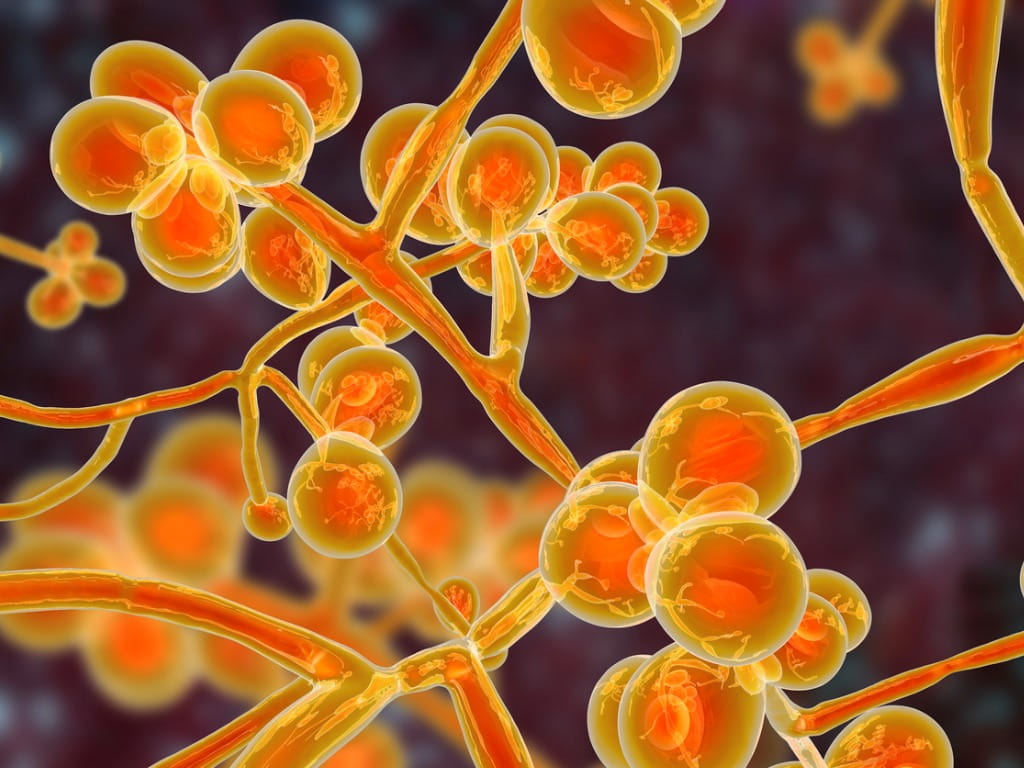Is There a Treatment for Candida auris?

The Bottom Line
Candida auris is a fungus that causes human disease, including sepsis and other infections. It can easily spread among individuals because it persists on environmental surfaces and survives common disinfecting processes. Candida auris infections can be challenging to treat, as they are often resistant to commonly available medications.

What is Candida auris?
Candida auris is a newer fungal (yeast) species that can cause human infections. There are approximately 150 different strains of Candida currently known, and only a fraction of those cause disease in humans. Candida auris was initially discovered on the ear of a Japanese patient in 2009 (“auris” is the Latin word for “ear”). Candida auris is increasingly recognized as an emerging health hazard due to several of its characteristics:
- It can survive for weeks on furniture, medical equipment, windows, and other surfaces.
- Many common cleaning agents, including quaternary ammonium compounds that are often used as disinfectants in hospital settings, do not effectively kill Candida auris.
- Candida auris is resistant to many currently available antifungal drugs, which means that infections caused by this fungus can be difficult or impossible to treat.
How does Candida auris spread?
Candida auris is found on human skin and can easily transfer to other surfaces such as curtains, floors, and cellular phones. It can remain on these surfaces for prolonged periods of time even when disinfectants are used and can easily spread from person to person. Many common disinfectants do not adequately kill Candida auris, so the fungus can spread throughout hospitals and other facilities even when standard cleaning protocols are followed.
Where is Candida auris found?
Candida auris is found on human skin as well as in the urine and nose. Healthy humans can carry the fungus on their skin without having signs or symptoms of infection (this is called “colonization”). Some people, including those with weakened immune systems or who are hospitalized in intensive care unit (ICU) settings, are at increased risk of developing Candida auris infection. In addition, because Candida auris can thrive on surfaces, people who undergo invasive medical procedures such as hemodialysis, insertion of catheters into the body, or tracheostomy tube placement, are also at higher risk of contracting Candida auris infection.
What are symptoms of Candida auris?
Signs and symptoms of Candida auris infection can include fever, sepsis (a severe bloodstream infection), ear infections, abscesses, and other wound infections. Older adults, people who are hospitalized in ICU settings, and individuals who have chronic medical conditions such as diabetes or heart disease, are more likely to develop infection due to Candida auris.
Is Candida auris deadly?
Candida auris can cause serious infections, and over one-third of infected individuals may die. Adults are more likely than young children or infants to die from Candida auris infection. Candida auris is often resistant to treatment with commonly used antifungal medications, making severe infections challenging to control.
What kills Candida auris?
Disinfectants containing chlorhexidine or sodium hypochlorite (bleach) are more effective in killing Candida auris than quaternary ammonium compounds. Hydroxide peroxide and ultraviolet-C (UVC) light can also be used to enhance killing of Candida auris. To effectively kill Candida auris and prevent the spread of germs to other individuals, the hospital beds, sinks, and medical equipment used in the care of infected individuals should be thoroughly cleaned on a regular basis. The United States Environmental Protection Agency (EPA) maintains a list of disinfecting products that are effective in killing Candida auris.
How do you treat Candida auris?
Candida auris is challenging to treat, as many strains of the fungus are resistant to the commonly available antifungal medications, including fluconazole (Diflucan) and amphotericin B. Some types of Candida auris are also resistant to treatment with the echinocandin class of drugs, including micafungin. Ibrexafungerp is a newer oral antifungal drug initially approved by the United States Food and Drug Administration (FDA) in 2021. Preliminary research suggests that ibrexafungerp may be an effective treatment for patients who are infected with resistant strains of Candida auris. Rezafungin, an intravenous antifungal drug approved by the FDA in 2023, may also be effective in treating some Candida auris strains.
What do you do if antifungal drugs make you sick?
If unwanted or unexpected symptoms develop after taking antifungal medications such as fluconazole or ibrexafungerp, get guidance from Poison Control immediately. Help from Poison Control is available at www.poison.org and by phone at 1-800-222-1222. Both options are free, confidential, and available 24 hours a day.
Kelly Johnson-Arbor, MD
Medical Toxicologist
Contact information for media requests
Poisoned?
Call 1-800-222-1222 or
Prevention Tips
- Use alcohol-based hand sanitizer or soap and water to clean hands, before and after providing health care to other people or visiting a hospital.
- Thoroughly disinfect any reusable medical equipment (including blood pressure cuffs and stethoscopes) used in caring for individuals infected with Candida auris. A list of EPA-approved disinfectants that are effective in killing Candida auris can be found here.
- Talk with your doctor if someone in your home is found to be colonized or infected with Candida auris.
This Really Happened
A 54-year-old man was evaluated in an Emergency Department due to fever. On examination, bloody drainage was noted in his left ear. A CT scan revealed the presence of infection in the ear and surrounding bone. The patient was admitted to the hospital and treated with antibiotics, but the ear drainage persisted for another week. Laboratory analysis of the ear drainage fluid confirmed the presence of Candida auris. The patient was treated with antifungal medications for over four months. After completion of this medication regimen, a follow-up CT scan was performed that demonstrated resolution of the previous infection (from Choi, et al., 2017).For More Information
Candida auris (Centers of Disease Control and Prevention)
Deadly fungal infection spreading at an alarming rate, CDC says (NBC News)
References
Brexafemme Prescribing Information. Scynexis, Inc. Jersey City, New Jersey. Revised June 2021.
Saris K, Meis JF, Voss A. Candida auris. Curr Opin Infect Dis. 2018 Aug;31(4):334-340.
Poisoned?
Call 1-800-222-1222 or
Prevention Tips
- Use alcohol-based hand sanitizer or soap and water to clean hands, before and after providing health care to other people or visiting a hospital.
- Thoroughly disinfect any reusable medical equipment (including blood pressure cuffs and stethoscopes) used in caring for individuals infected with Candida auris. A list of EPA-approved disinfectants that are effective in killing Candida auris can be found here.
- Talk with your doctor if someone in your home is found to be colonized or infected with Candida auris.
